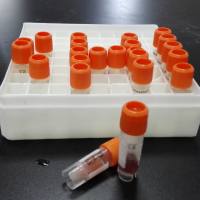Liver Transplantation as a Model to Study Hepatitis C Virus Infection
互联网
| 1. |
The exact timing of infection is known (shortly after liver transplantation).
|
| 2. |
Possible source(s) of infection can be identified (pretransplantation infection and/or infection from the organ donor or from blood products transfused in the perioperative period).
|
| 3. |
Serial serum samples are often available, since these patients are typically followed in a single center.
|
| 4. |
Multiple liver biopsies are typically performed, which facilitates study of the histological evolution of HCV-associated liver disease.
|









